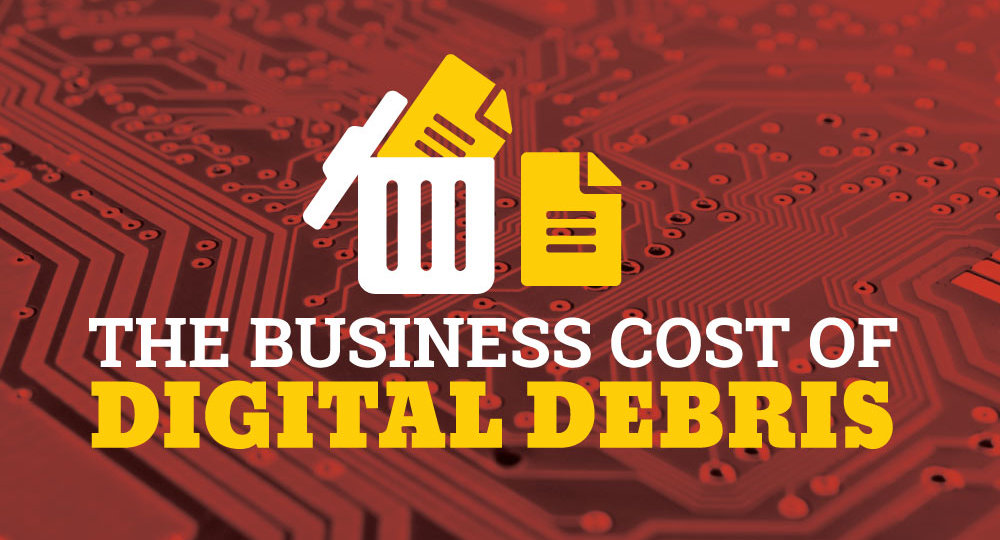
Every day, companies are generating mountains of data that help power their businesses. And every day, mountains of data are left in digital storage vaults, stripped of purpose and value, creating an ever-increasing liability for the company it once served.
The problem is a daunting one. Even in companies with strong records management policies, files tend to be saved for fear of losing a valuable asset or violating a regulatory retention requirement. Not only do companies have to manage user-created files (and their multiple drafts), but information from external sources (social media, email, voicemails), machines (logs and alerts), and a growing field of IoT devices.
These days, in a world of relatively cheap storage, it may seem safer just to back everything up in a “keep everything forever” strategy.
However, this strategy is essentially kicking the can down the road. At some point, the cost of retaining so much digital debris can have consequential business costs for companies from an operational, legal, and information technology standpoint.
For those of us in the field of e-discovery, we understand that this approach to data governance can lead to exorbitant costs when companies are hit with electronic discovery requests. Often times companies will not find the will to take on effective information governance until the real costs of neglect are made painfully clear.
What are the advantages of disposing of your company’s digital debris? Here are some of the benefits you can expect:
- A reduction in litigation and discovery production costs
- A reduction in labor costs
- A reduction in storage and IT infrastructure costs
- A reduction in litigation and compliance risks
- Ability to use streamlined data more effectively for big data analytics
EDRM.NET has an excellent whitepaper on their site that helps explain
EDRM Whitepaper: Disposing of Digital Debris

